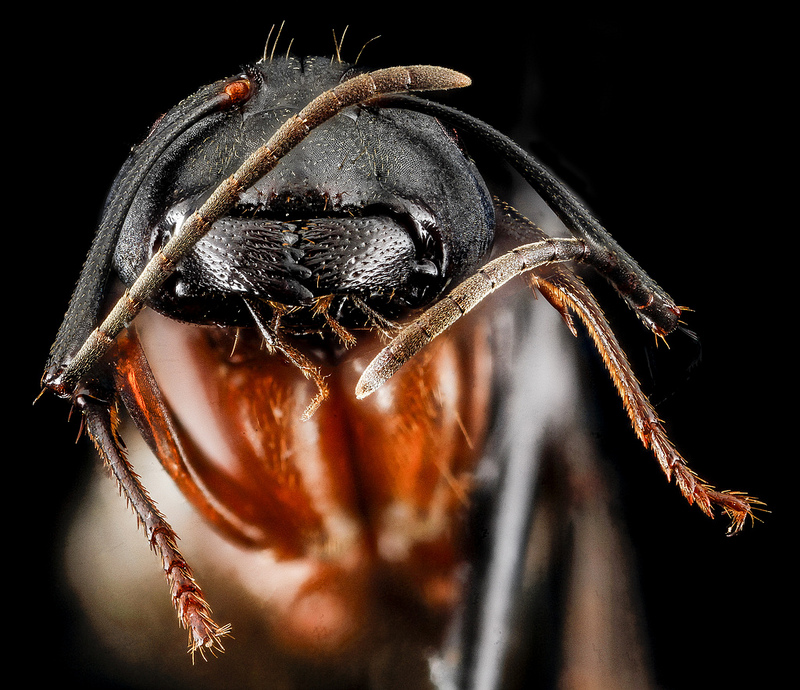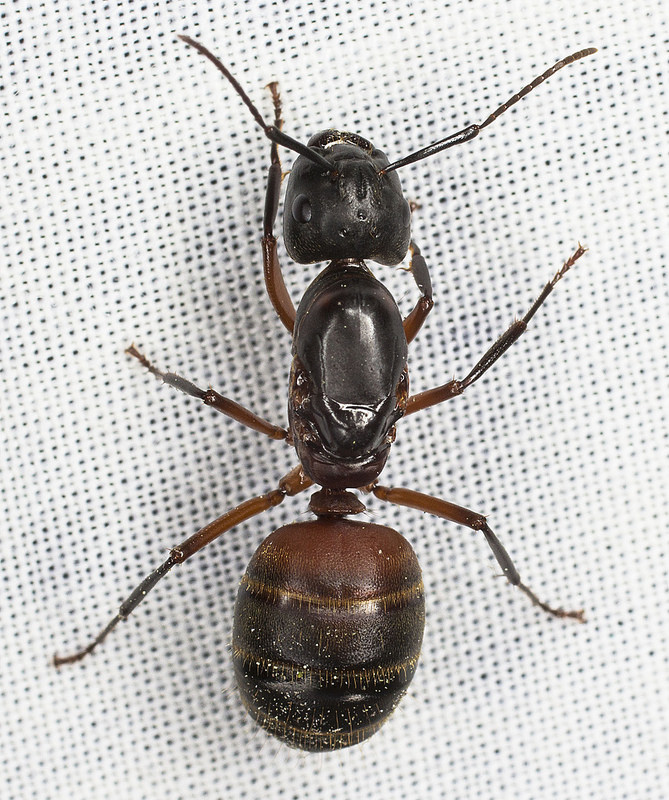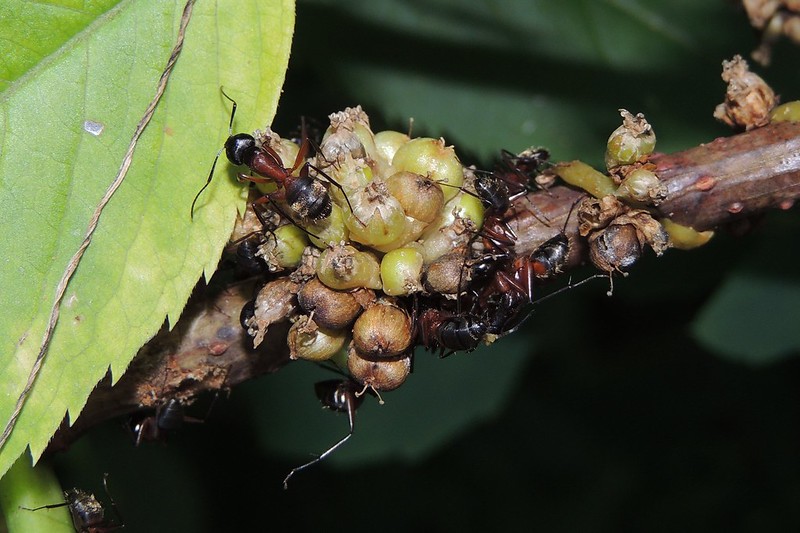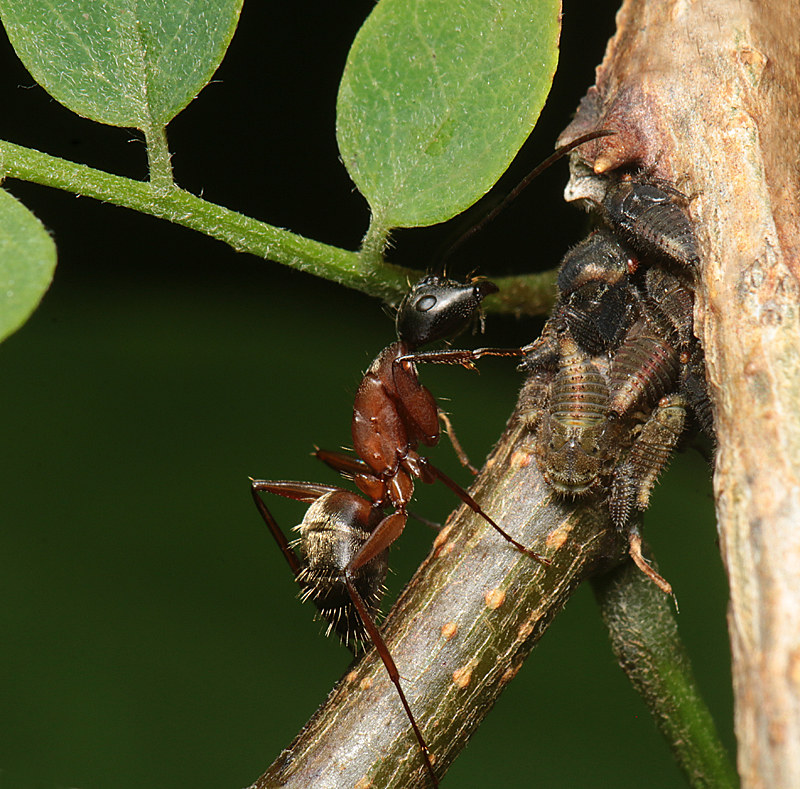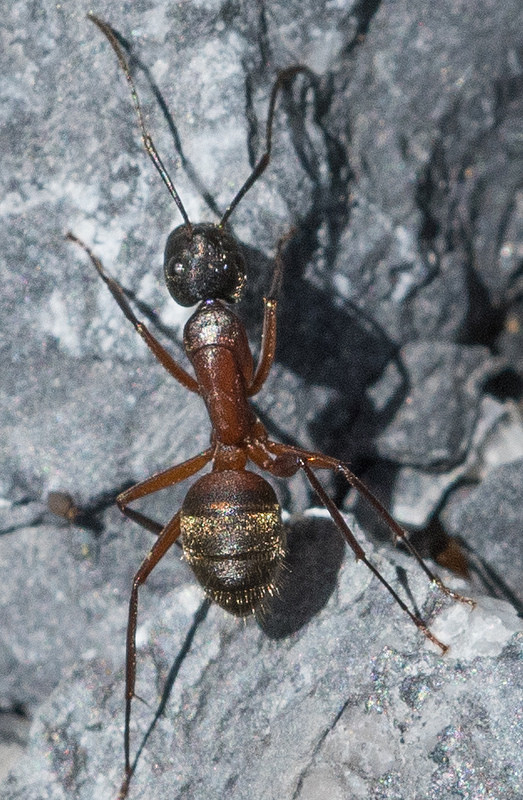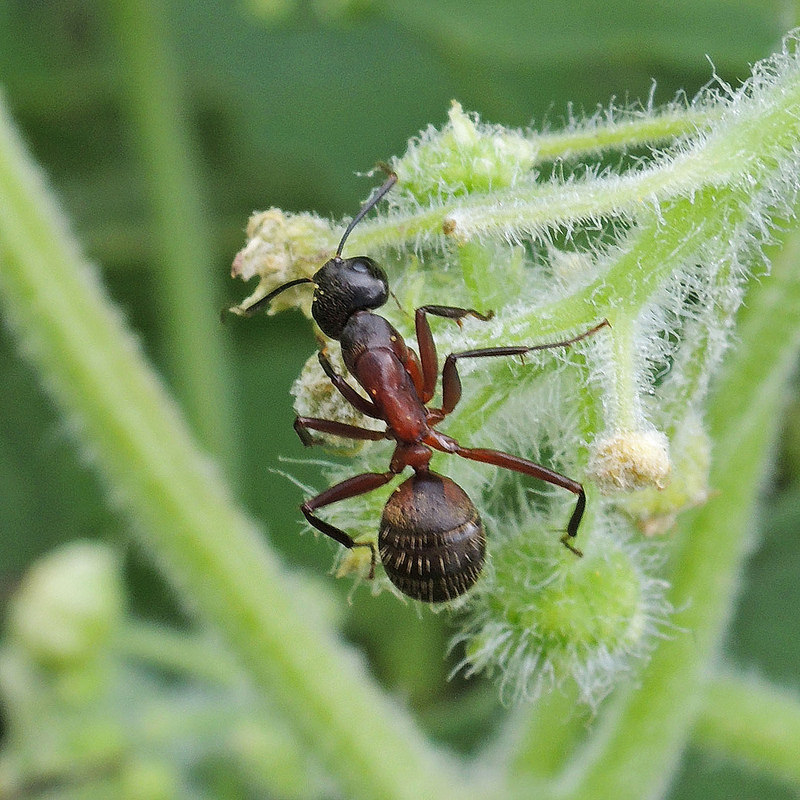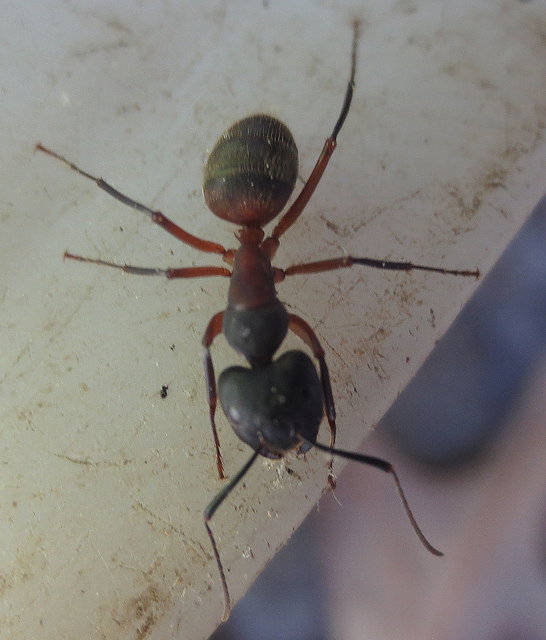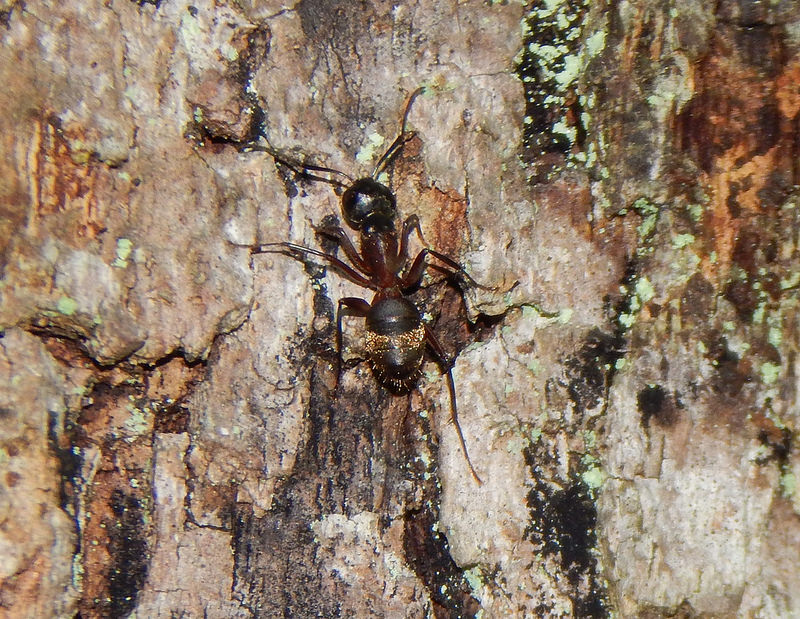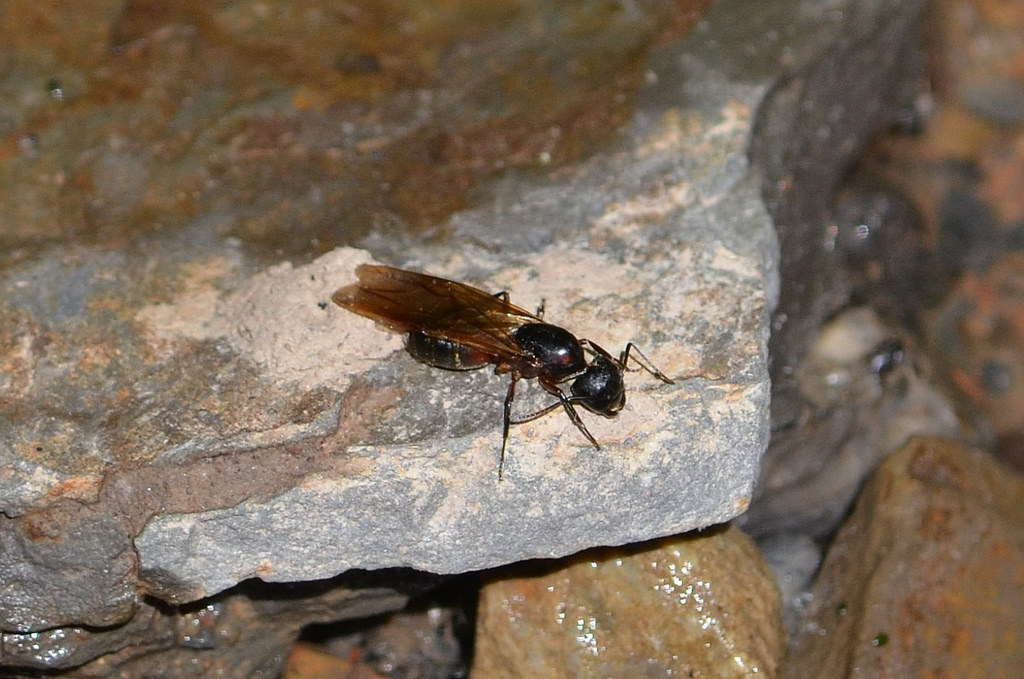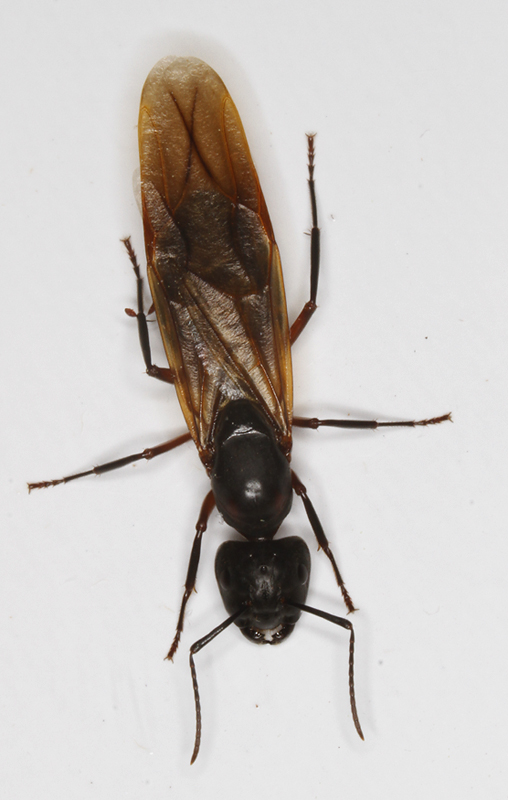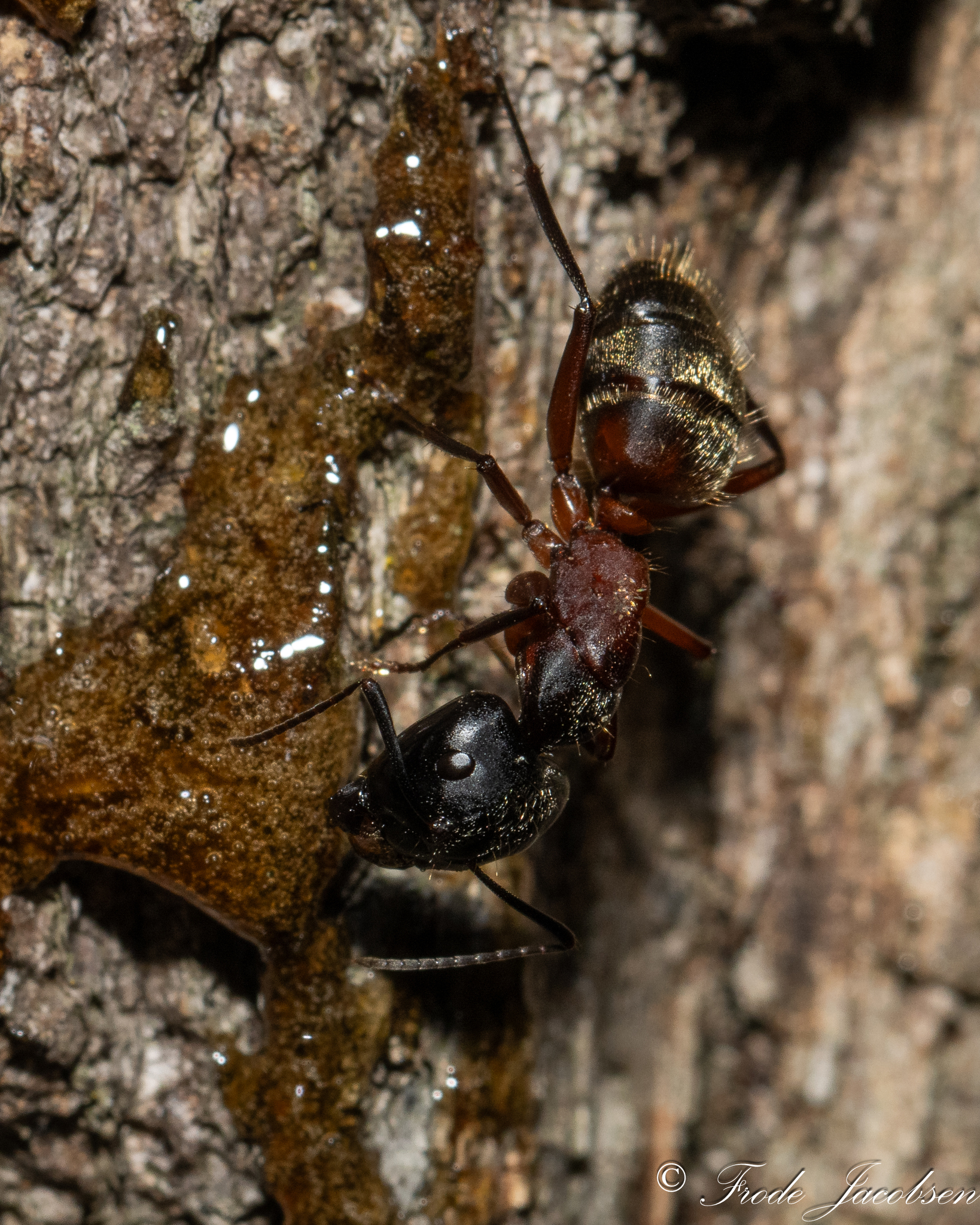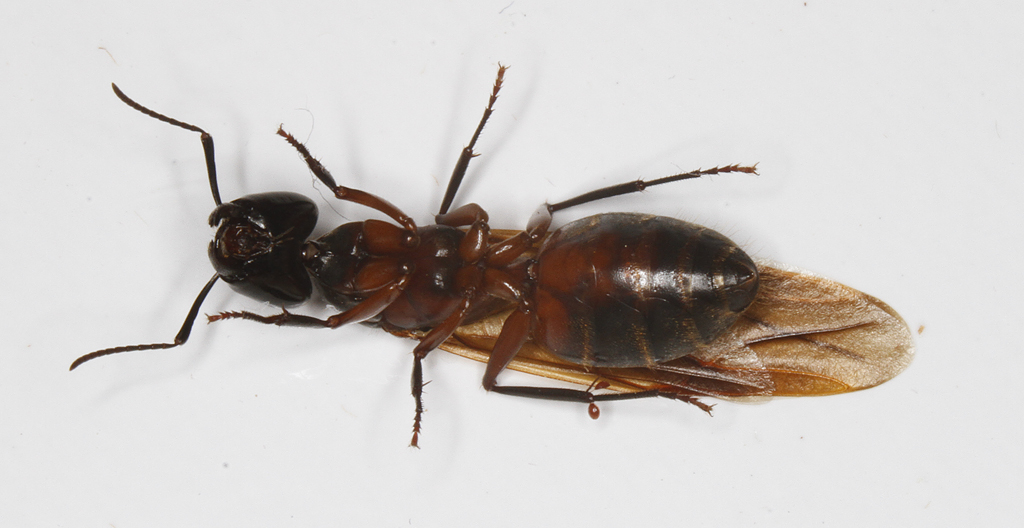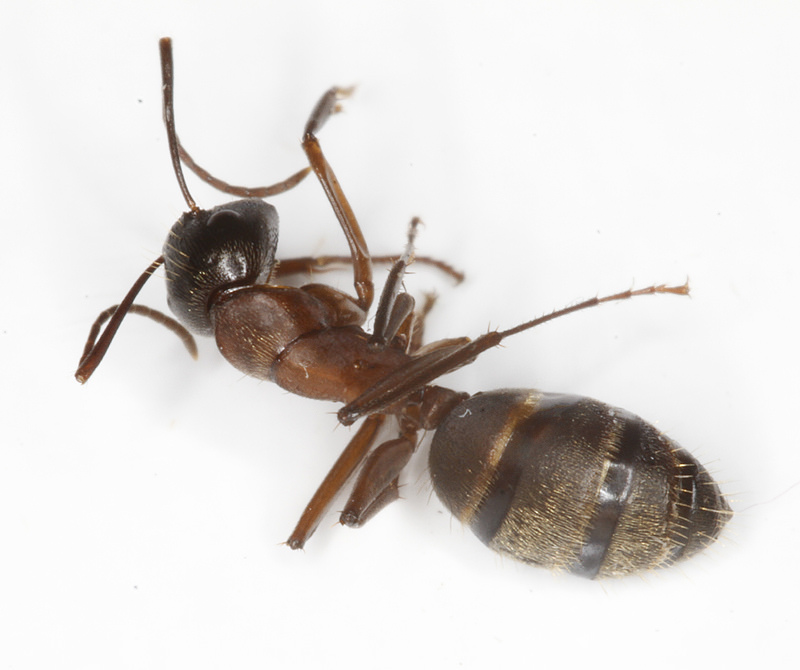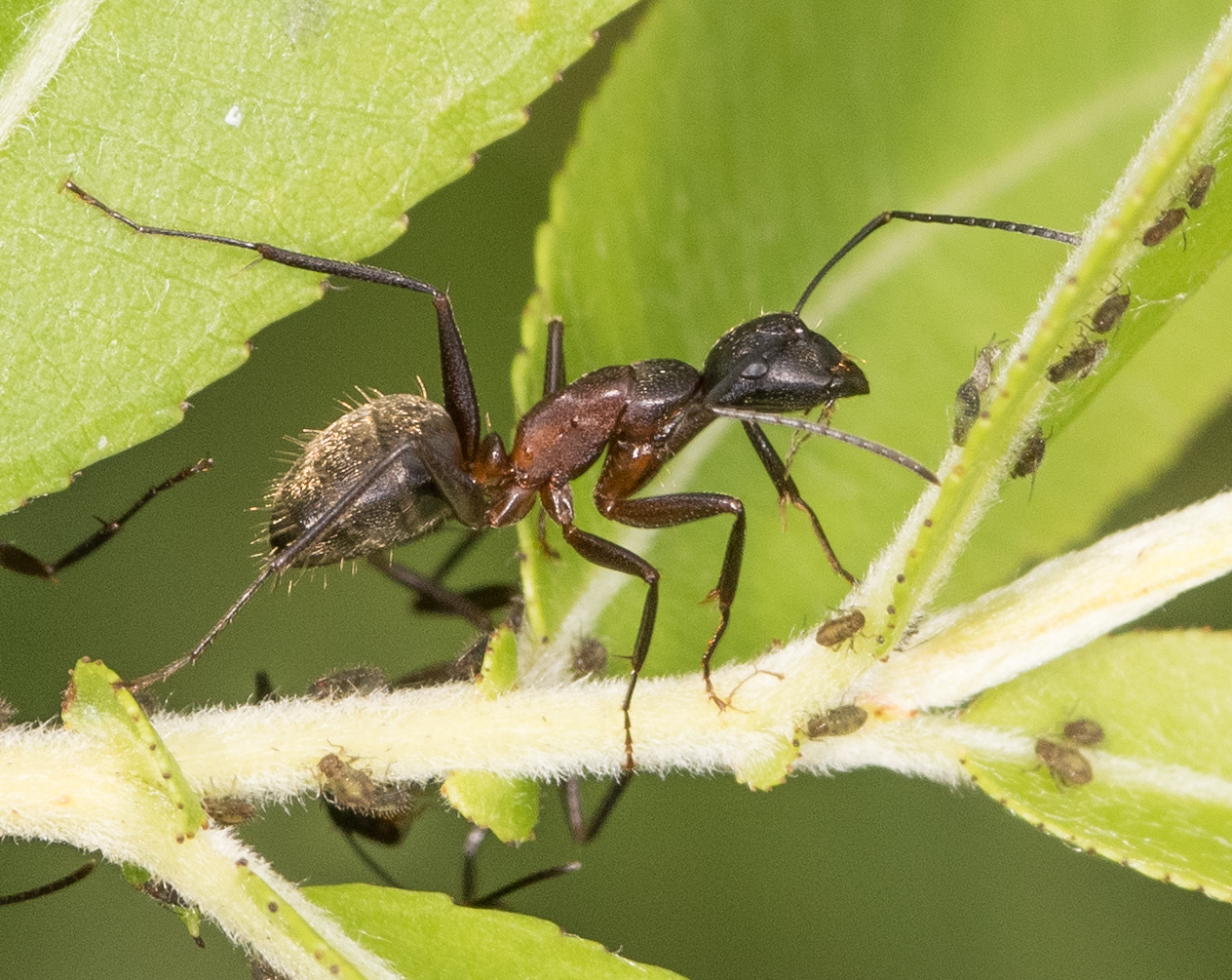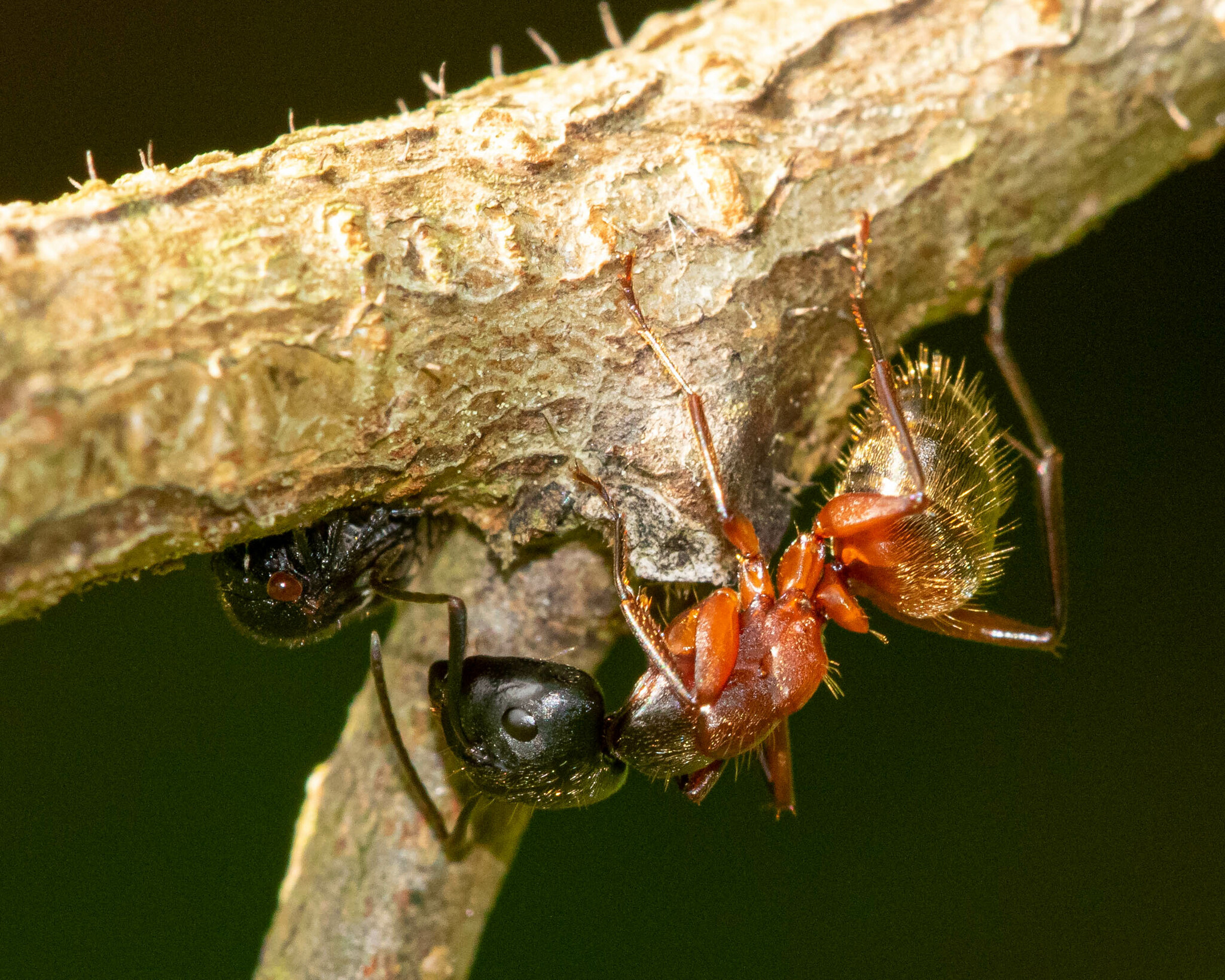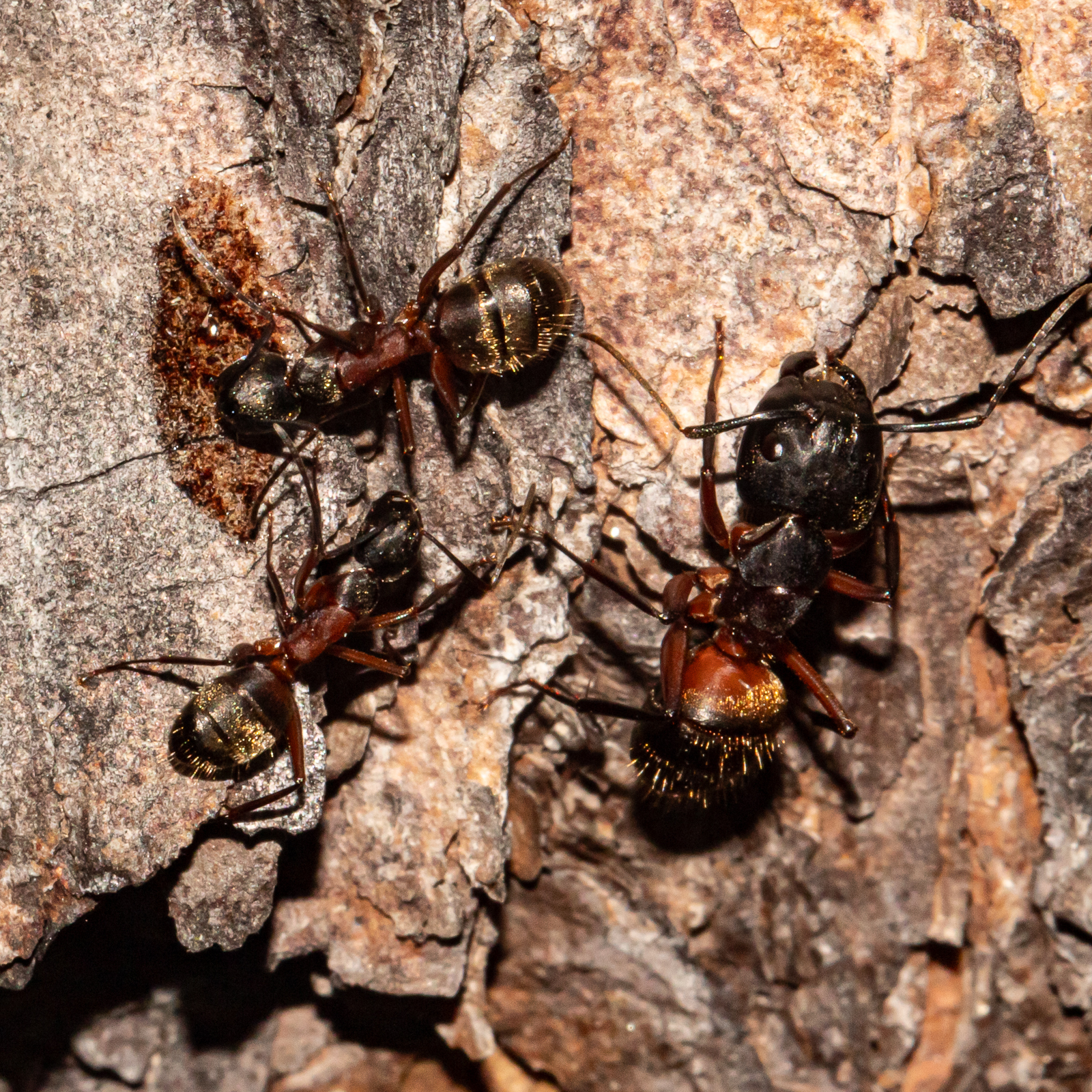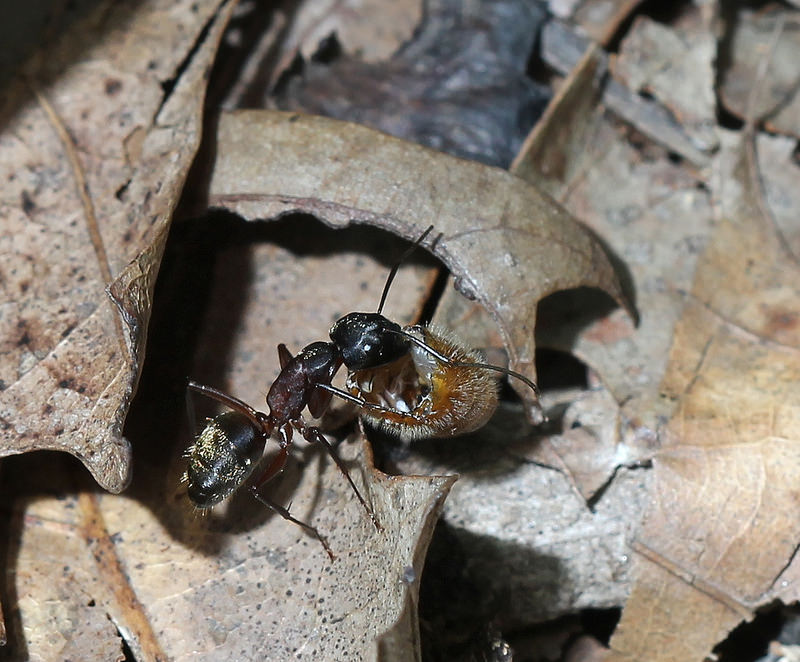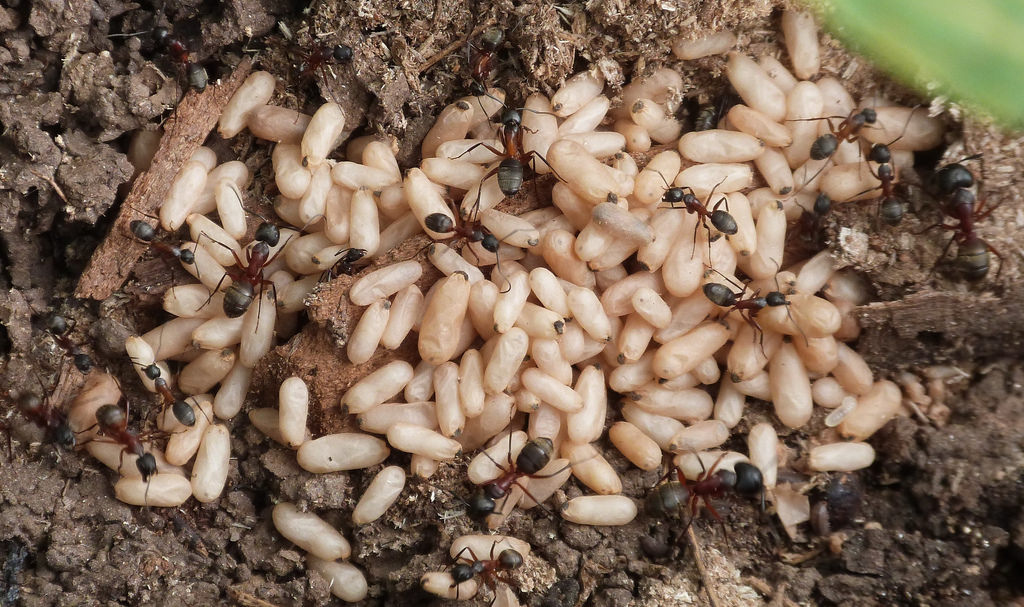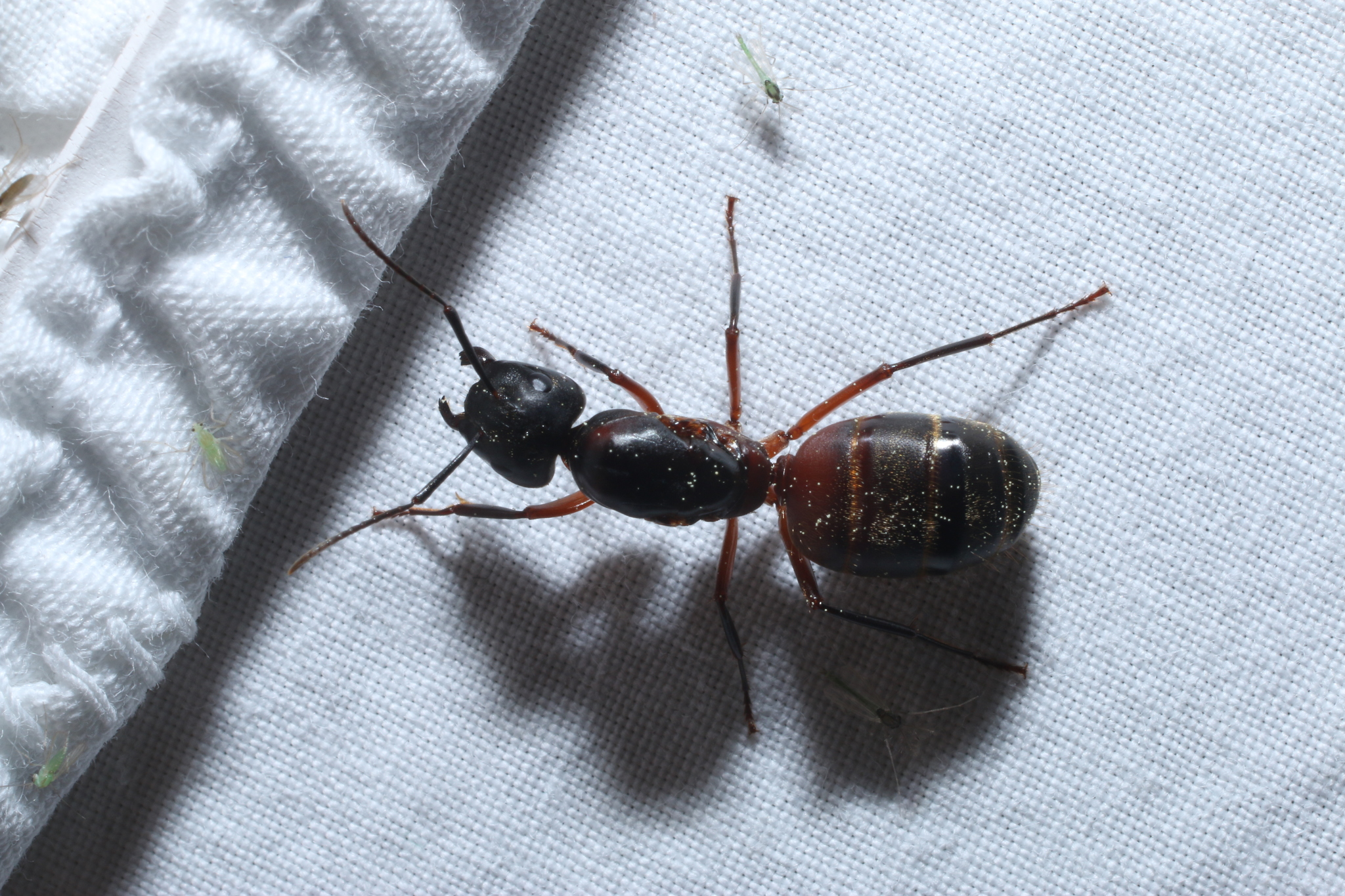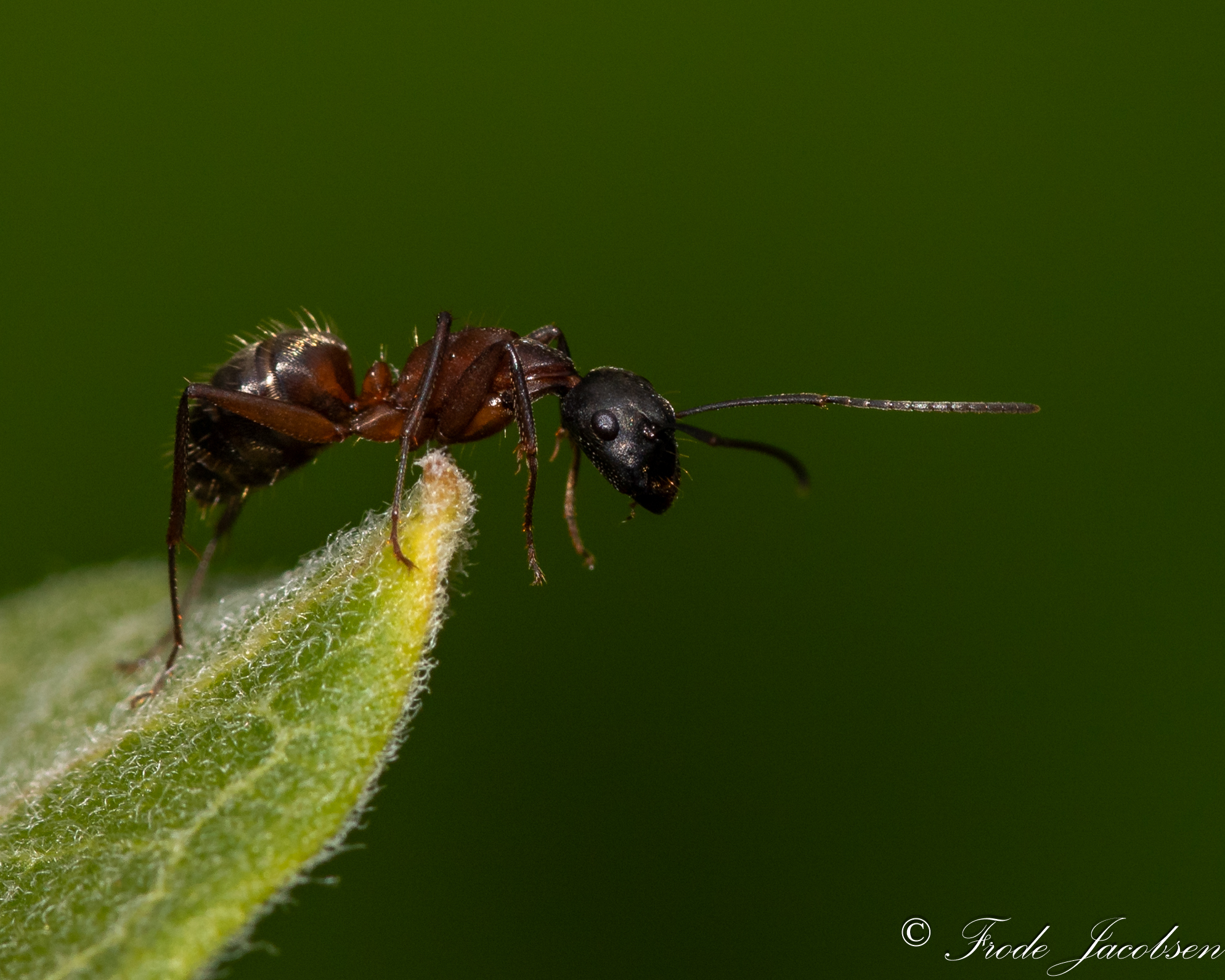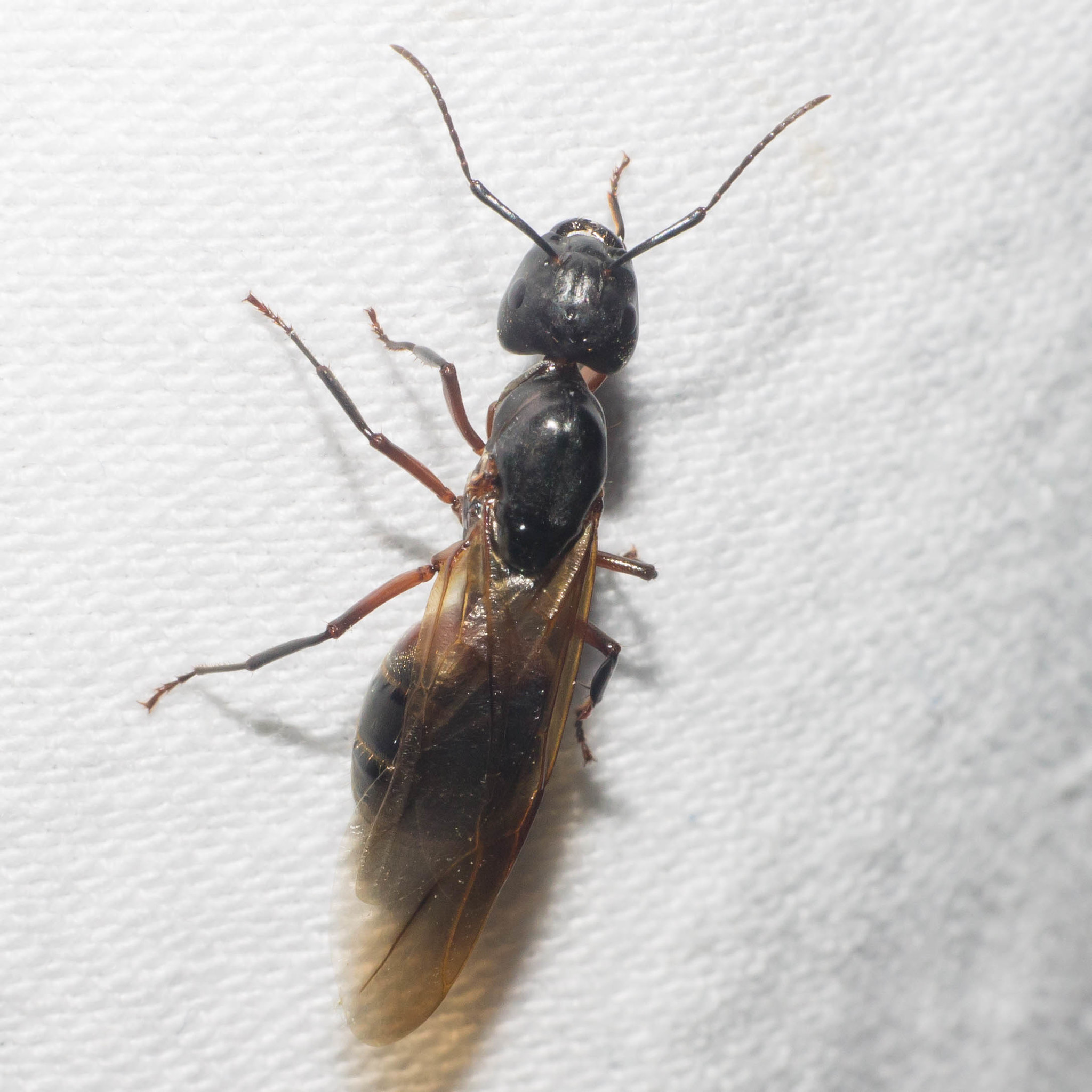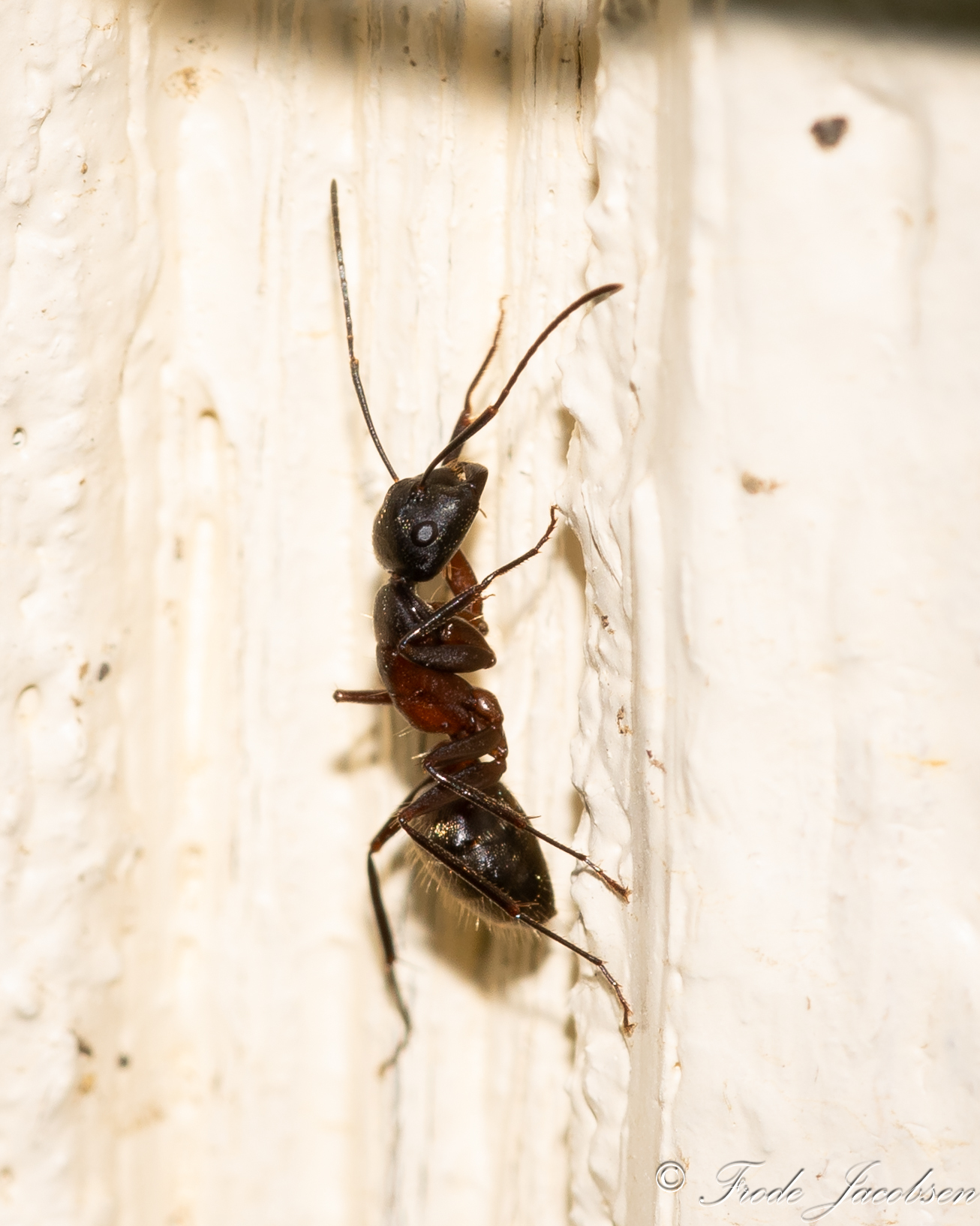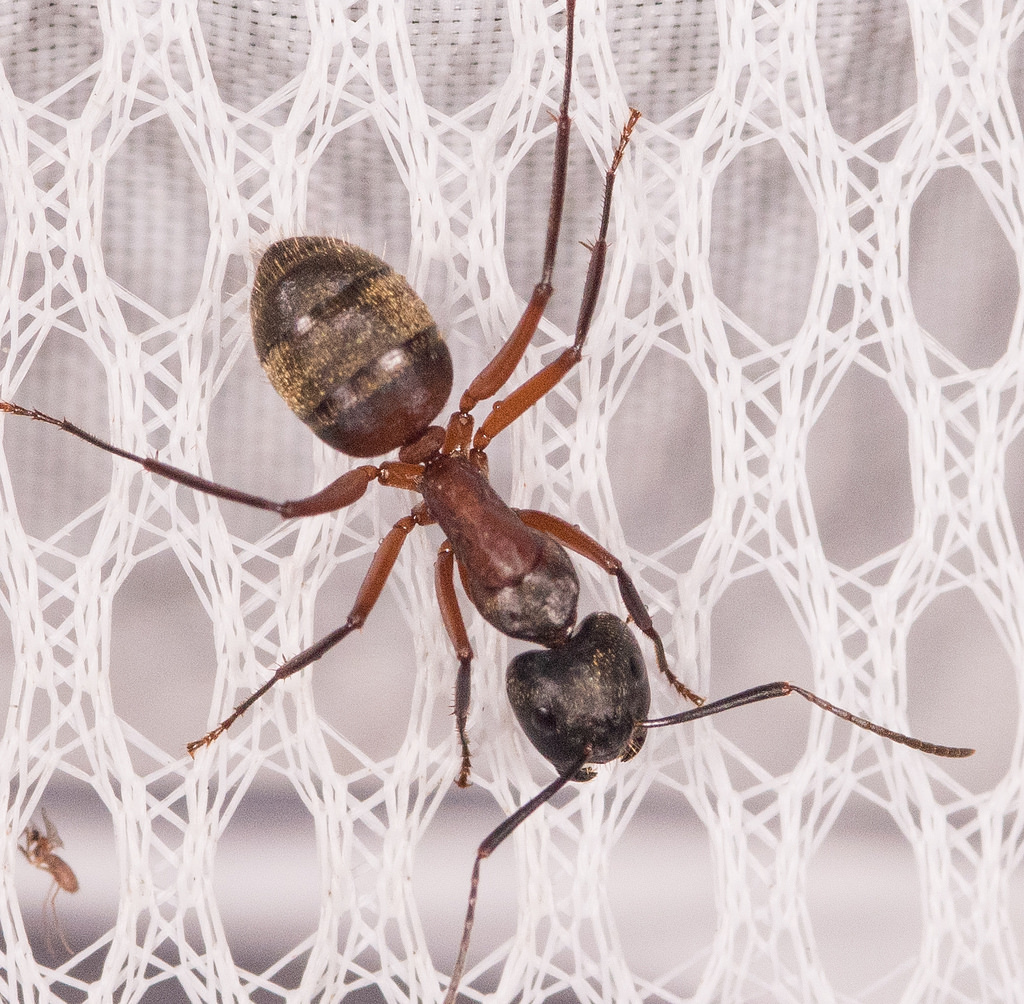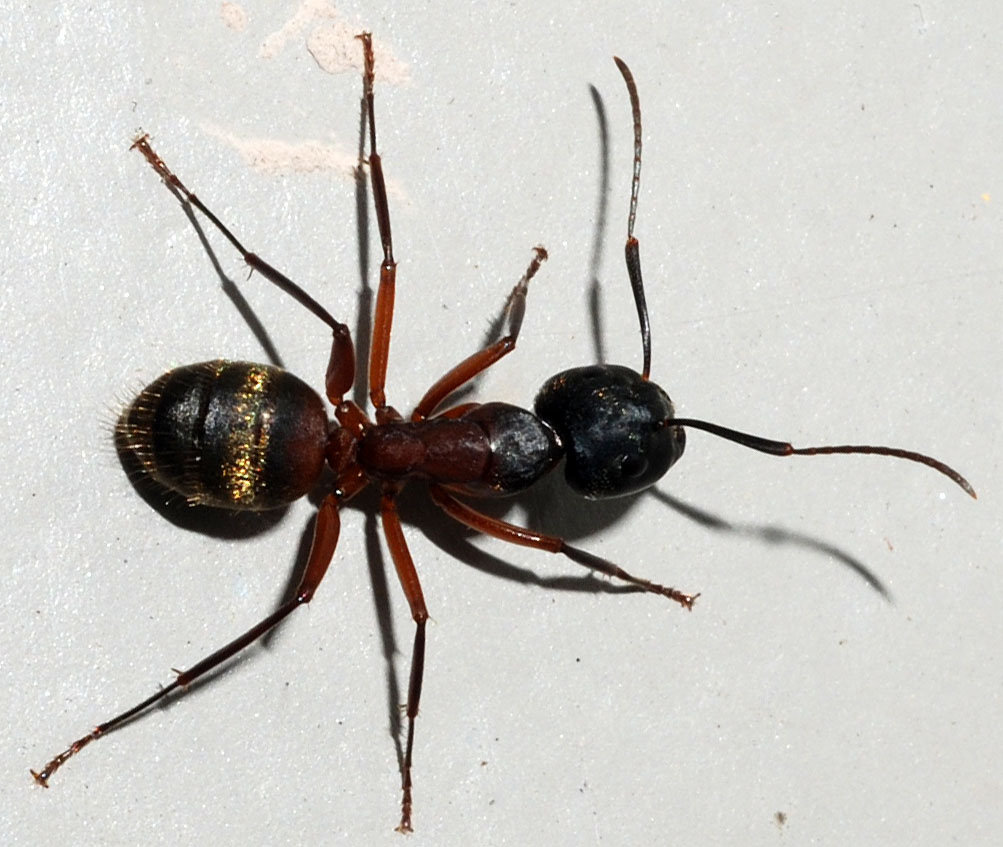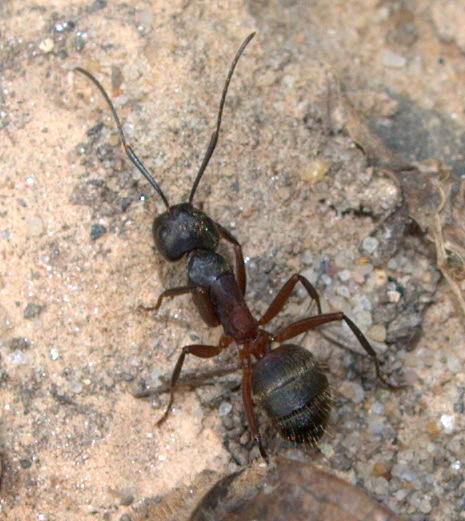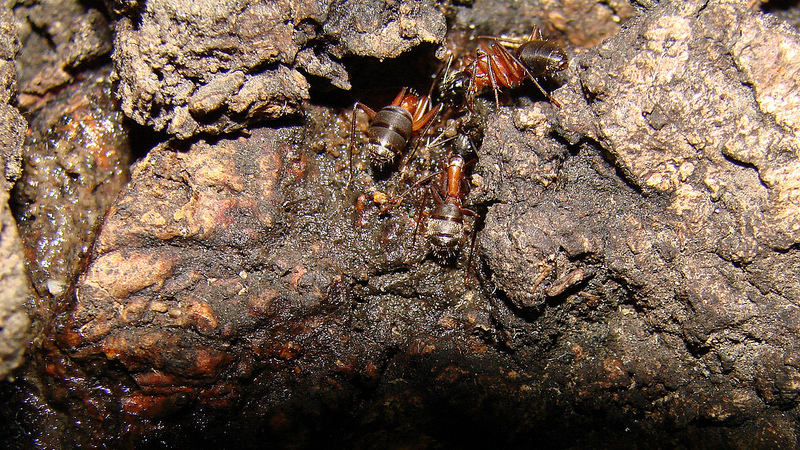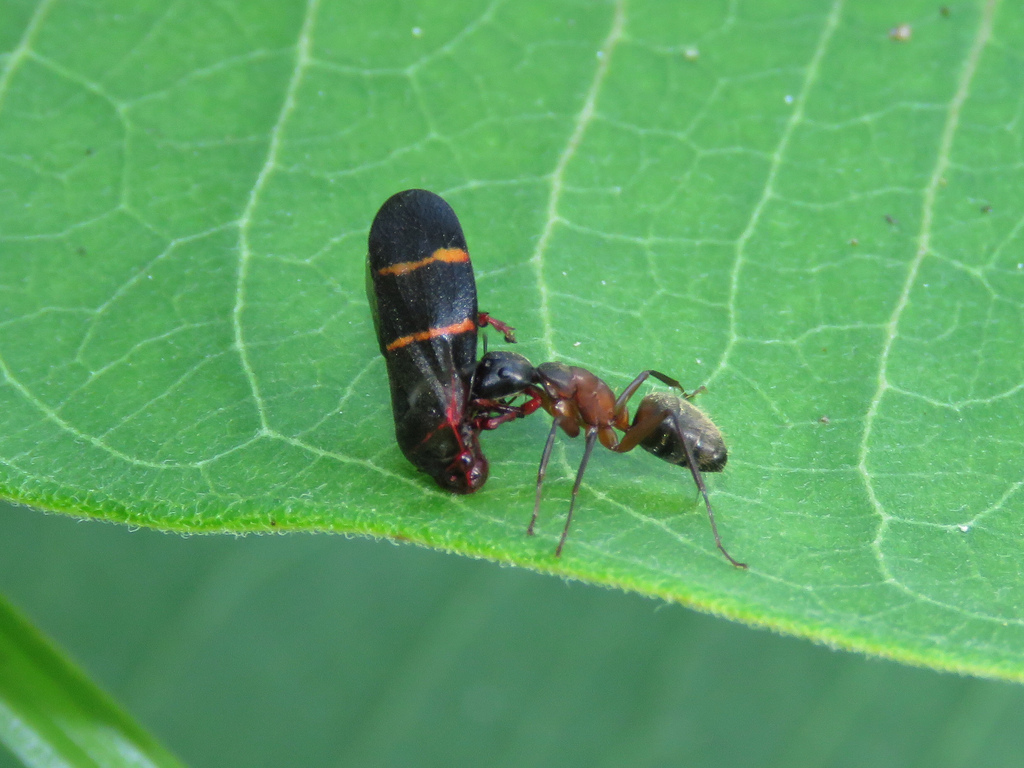Map Snapshot




















166 Records
Status
This common eastern U.S. species typically nests around rotting logs and stumps, with colonies often extending into the soil below. Frequently colonizes wooden beams in buildings. Also found in moist, rich woodlands and dry hardwood forests (See Frye et al., 2014).
Seasonality Snapshot
Use of media featured on Maryland Biodiversity Project is only permitted with express permission of the photographer.
Camponotus chromaiodes at Chino Farms, Queen Anne's Co., Maryland.
Media by
USGS PWRC.
Camponotus chromaiodes at Chino Farms, Queen Anne's Co., Maryland.
Media by
USGS PWRC.
A Red Carpenter Ant in Cecil Co., Maryland (4/25/2016). Determined by James C. Trager/BugGuide.
View Record Details
Media by
Shannon Schade.
A Red Carpenter Ant in Worcester Co., Maryland (9/22/2014). Determined by James C. Trager/BugGuide.
View Record Details
Media by
Scott Housten.
A Red Carpenter Ant in Prince George's Co., Maryland (5/30/2020). Verified by James Trager.
View Record Details
Media by
Barbara Thurlow.
A Red Carpenter Ant in Frederick Co., Maryland (5/8/2016). Determined by James C. Trager/BugGuide.
View Record Details
Media by
Mark Etheridge.
A Red Carpenter Ant in Harford Co., Maryland (8/23/2014). Determined by Ben Coulter/BugGuide.
View Record Details
Media by
Rod Burley.
A Red Carpenter Ant in St. Mary's Co., Maryland (5/28/2016). Determined by Aaron Hunt/BugGuide.
View Record Details
Media by
Tyler Bell.
A Red Carpenter Ant in Washington Co., Maryland (7/5/2016). Determined by James C. Trager/BugGuide.
View Record Details
Media by
Derek Hudgins.
A Red Carpenter Ant queen in Frederick Co., Maryland (5/30/2014).
Media by
Hans Holbrook.
A Red Carpenter Ant in Anne Arundel Co., Maryland (4/11/2017).
View Record Details
Media by
Bill Hubick.
Red Carpenter Ant in Baltimore Co., Maryland (10/30/2024). (c) Frode Jacobsen, some rights reserved (CC BY-NC).
View Record Details
Media by
Frode Jacobsen.
A Red Carpenter Ant in Anne Arundel Co., Maryland (4/11/2017).
View Record Details
Media by
Bill Hubick.
A Red Carpenter Ant in Baltimore Co., Maryland (6/10/2018). Verified by James C. Trager/BugGuide.
View Record Details
Media by
Bill Hubick.
Red Carpenter Ants in Baltimore Co., Maryland (10/15/2020).
View Record Details
Media by
Richard Crook.
Red Carpenter Ant in Washington Co., Maryland (8/27/2017). (c) Mark Etheridge, some rights reserved (CC BY-NC).
View Record Details
Media by
Mark Etheridge.
Red Carpenter Ant in Calvert Co., Maryland (6/14/2022). (c) Jason E. Avery, all rights reserved.
View Record Details
Media by
Jason Avery.
Red Carpenter Ant in Anne Arundel Co., Maryland (10/22/2024). (c) Timothy Reichard, all rights reserved.
View Record Details
Media by
Timothy Reichard.
A Red Carpenter Ant in Baltimore Co., Maryland (8/8/2014). Verified by James C. Trager/BugGuide.
Media by
Brandon Woo.
Red Carpenter Ants in Howard Co., Maryland (7/26/2017).
View Record Details
Media by
Sue Muller.
Red Carpenter Ant in Anne Arundel Co., Maryland (6/26/2018). (c) Timothy Reichard, all rights reserved.
View Record Details
Media by
Timothy Reichard.
Red Carpenter Ant in St. Mary's Co., Maryland (4/24/2022). (c) jtylerbell, some rights reserved (CC BY-NC).
View Record Details
Media by
Tyler Bell.
Red Carpenter Ant in Baltimore Co., Maryland (6/2/2021). (c) Frode Jacobsen, some rights reserved (CC BY-NC).
View Record Details
Media by
Frode Jacobsen.
Red Carpenter Ant in Howard Co., Maryland (5/16/2017). (c) Timothy Reichard, all rights reserved.
View Record Details
Media by
Timothy Reichard.
Red Carpenter Ant in Anne Arundel Co., Maryland (5/24/2018). (c) Timothy Reichard, all rights reserved.
View Record Details
Media by
Timothy Reichard.
Red Carpenter Ant in Baltimore Co., Maryland (6/9/2021). (c) Frode Jacobsen, some rights reserved (CC BY-NC).
View Record Details
Media by
Frode Jacobsen.
A Red Carpenter Ant in Frederick Co., Maryland (7/14/2017). Determined by James C. Trager/BugGuide.
View Record Details
Media by
Mark Etheridge.
A Red Carpenter Ant (major worker) in Anne Arundel Co., Maryland (6/17/2017). Verified by John S. Ascher/BugGuide.
View Record Details
Media by
Robert Aguilar, SERC.
A Red Carpenter Ant in Anne Arundel Co., Maryland (4/19/2012).
Media by
Brandon Woo.
A Red Carpenter Ant in Baltimore Co., Maryland (5/4/2015). Verified by James C. Trager/BugGuide.
View Record Details
Media by
Emily Stanley.
A Red Carpenter Ant in Baltimore City, Maryland (8/27/2015). Verified by James C. Trager/BugGuide.
View Record Details
Media by
Thomas Wilson.
Red Carpenter Ants at Patapsco Valley SP, Baltimore Co., Maryland (6/5/2013).
Media by
Don Haskins.
A Red Carpenter Ant carrying a Two-lined Spittlebug in Worcester Co., Maryland (8/5/2018). Determined by Seth Burgess and Alex Wild via BugGuide.
View Record Details
Media by
Josh Emm.
Source: Wikipedia
| Camponotus chromaiodes | |
|---|---|

| |
| Scientific classification | |
| Domain: | Eukaryota |
| Kingdom: | Animalia |
| Phylum: | Arthropoda |
| Class: | Insecta |
| Order: | Hymenoptera |
| Family: | Formicidae |
| Subfamily: | Formicinae |
| Genus: | Camponotus |
| Subgenus: | Camponotus |
| Species: | C. chromaiodes
|
| Binomial name | |
| Camponotus chromaiodes Bolton, 1995
| |
Camponotus chromaiodes, known generally as, the ferruginous carpenter ant or red carpenter ant, is a species of carpenter ant native to the eastern United States, Nebraska, Kansas, and possibly California.[1][2][3][4][5][6][7][8] Acetobacteraceae are found in the guts of workers in this species.[9]

References
[edit]- ^ "Camponotus chromaiodes Report". Integrated Taxonomic Information System. Retrieved 2018-05-03.
- ^ "Camponotus chromaiodes species details". Catalogue of Life. Retrieved 2018-05-03.
- ^ "Camponotus chromaiodes". GBIF. Retrieved 2018-05-03.
- ^ "Camponotus chromaiodes Species Information". BugGuide.net. Retrieved 2018-05-03.
- ^ Ward, Philip S.; Blaimer, Bonnie B.; Fisher, Brian L. (2016). "A revised phylogenetic classification of the ant subfamily Formicinae(Hymenoptera: Formicidae), with resurrection of the genera Colobopsis and Dinomyrmex". Zootaxa. 4072 (3). Magnolia Press: 343–57. doi:10.11646/zootaxa.4072.3.4. PMID 27395929.
- ^ Christopher M. Wilson; Autumn Smith-Herron (2016). "Morphology of the male genitalia of Brachymyrmex and their implications in the Formicinae phylogeny". Journal of Hymenoptera Research. 50. Pensoft Publishers: 81–95. doi:10.3897/JHR.50.8697. ISSN 1070-9428.
- ^ "AntWeb". California Academy of Sciences. Retrieved 2018-05-03.
- ^ Economo, Evan; Guénard, Benoit. "antmaps.org Camponotus chromaiodes". antmaps.org. Okinawa Institute of Science and Technology. Retrieved 23 September 2024.
- ^ Brown, Bryan P.; Wernegreen, Jennifer J. (11 July 2016). "Deep divergence and rapid evolutionary rates in gut-associated Acetobacteraceae of ants". BMC Microbiology. 16 (1): 140. doi:10.1186/s12866-016-0721-8. ISSN 1471-2180. PMC 4939635. PMID 27400652.
Further reading
[edit]- Bolton, B. (2016). "Catalogue of the Ants of the World" (PDF). unpublished communication. Retrieved 2019-07-02.
External links
[edit] Media related to Camponotus chromaiodes at Wikimedia Commons
Media related to Camponotus chromaiodes at Wikimedia Commons

